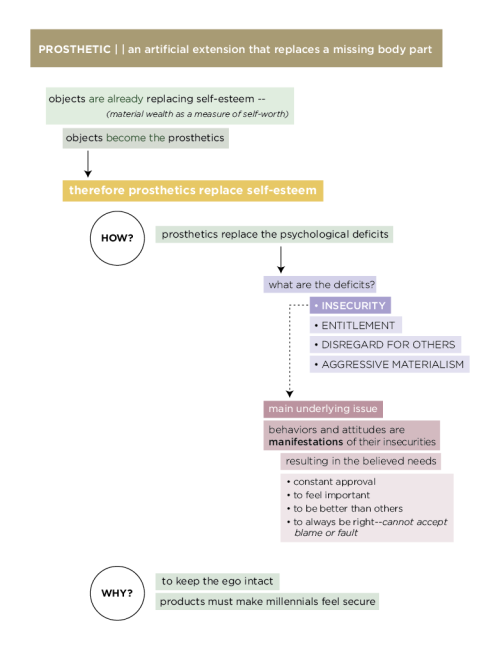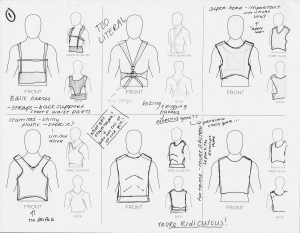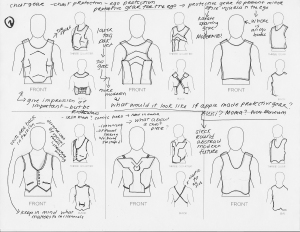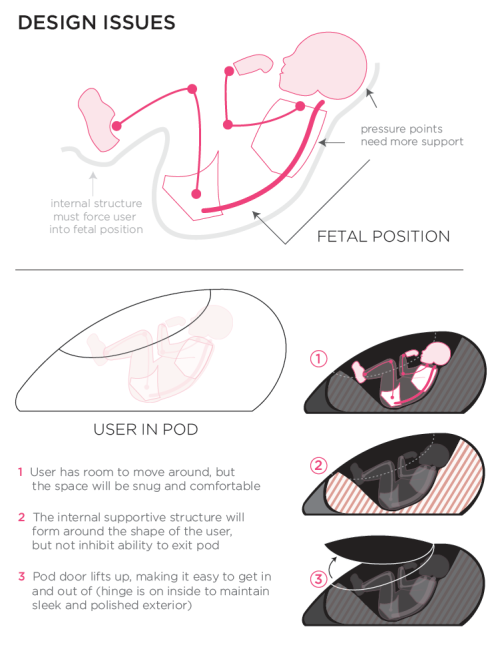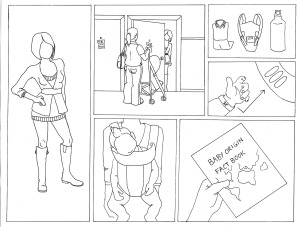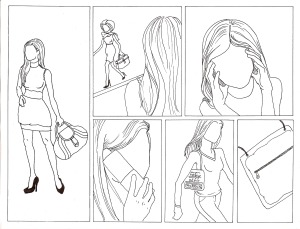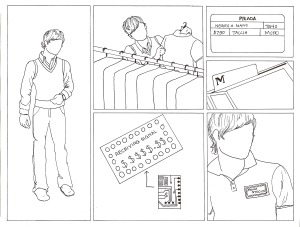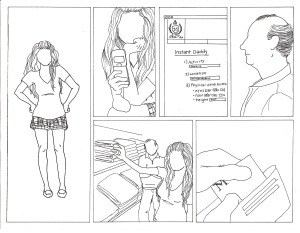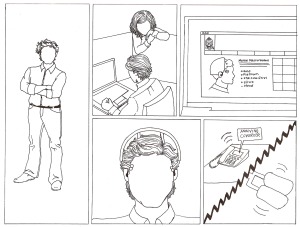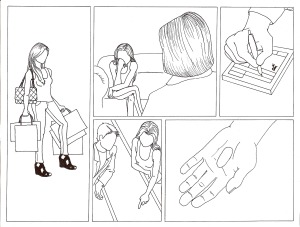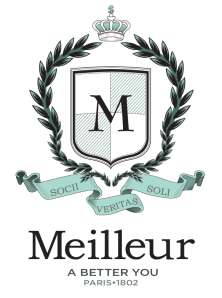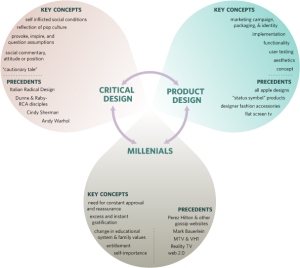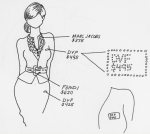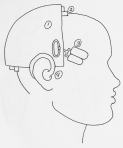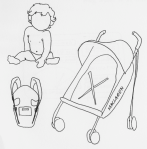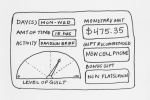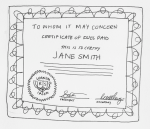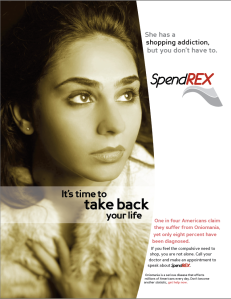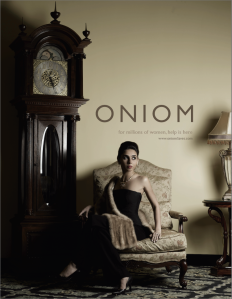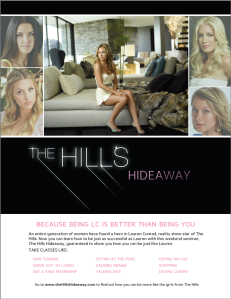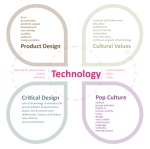MILLENNIALS (AND THEIR SOCIAL GROUPS)
My thesis focuses on millennials, or people born in the eighties, and their socially negative perspectives as a result of changing cultural values. I believe these attitudes, such as entitlement, were caused by several factors: 1) the introduction of the self-esteem movement at home and in school curriculums, 2) changing family dynamics and parenting styles, 3) the excesses of the 80s and 90s, and 4) increased affordability and access to technology and information. All of these forces have created a generation of self-important individuals who are selfish and unconcerned with others, and have learned to value what a person can provide versus the person themselves.
The self-esteem movement started in the 1970s following the 1969 publication of The Psychology of Self-Esteem by Nathaniel Branden. The book emphasized that self-esteem is the most important facet of a person, and one must do whatever it takes to achieve positive self-esteem (Po Bronson, “How Not to Talk to your Kids,” (New York Magazine, Feb 12, 2007) from nymag.com). The trend exploded in the 80s, giving rise to a generation of kids raised on superfluous praise, and who were unfamiliar with failure. “The colorful ribbons and shiny trophies they earned just for participating made them feel special. But…[they] crumble a bit at the first blush of criticism.” This is not to say that self-esteem is not necessary for healthy development, rather that when pushed to the point it has been, it has done more harm than good. (Sharon Jayson, “Yep, Life’ll Burst That Self-Esteem Bubble,” (USA Today, Feb 15 2005) from usatoday.com). Essentially, constantly receiving praise and accolades doesn’t necessarily boost the self-esteem, but adversely causes them to question their competence. There is much research regarding the negative effects of the self-esteem movement, and how it has created children who undervalue and underestimate their abilities, or never learn how to properly deal with failure. However, my project takes a different look at how the self-esteem movement affected a specific niche of my generation: the upper middle class, more privileged, urban and suburban, mid to late twenty-somethings. This group grew up with the same incessant ego boosting that created a sense of insufficiency, except they found comfort in their socioeconomic status. From an early age, they were taught to value objects, and thus the objects became a way to validate themselves as worth while individuals. The need to verify one’s self-worth by taking inventory manifested itself into a materialistic culture that encouraged the mistreatment of others who could not meet upper middle class standards.
During the 80s and 90s, there was another major cultural change occurring: not only did most households have 2 working parents, but also the divorce rate was skyrocketing. Parents gave gifts as a mea culpa for not spending enough time with their children. Children were spoiled in order for one parent to win favor over their ex-spouse. Both of these examples are popular behaviors that I have witnessed, and observed the effect it had, over time, on those around me.
This use of material items as a currency for love and affection was a result of the monetary successes of Reganomics. Once the wave of Reaganomics hit a high, and more people were able to afford luxury goods, a certain need was created. More people had money, and therefore, they felt compelled to show it off and let others see their successes, i.e. big house, expensive cars, expensive clothes, and even children and what parents were able to provide for them became a show of wealth. Thus, children absorbed the notion that they were entitled to receive anything they wanted because it was implied by their parents. Money and material wealth was seen as a deserved privilege, not a twist of genetic fate to be appreciated and respected. Millennials have expensive taste in gadgets and fashion, and spend a significant amount of money trying to attain such high price items. Unfortunately, they use their parents’ money to satisfy their materialistic urges, reinforcing entitled ideals while demeaning the true value of a dollar.
Because technology was advancing rapidly, and turned into something that everyone had access to, it became the social norm for every member of the household to have their own computer, cell phone, etc. My generation grew up expecting upgrades and replacements, thinking everything (not just technology) gets old and loses the excitement of being new, and thus needs to be traded up often.
This notion of entitlement then essentially encompasses the other key concepts of the millenials: Self-importance, Excess and instant gratification, and A need for constant approval and reassurance.
CRITICAL DESIGN
The purpose of critical design pieces is to make social commentary, or to present an attitude or position. Although critical design is a term that is often used to describe the RCA school, it is really broader and may be applied to several artists who use satire and dark humor to approach a topic. My thesis was born out of years of unintentional observation of a specific group and their neuroses, caused by the mechanisms they had adopted to cope with the idea that ones self-worth is directly related to the material objects one owns. The critical design pieces I am making are a response to that attitude and how it has shaped the current mental state of my generation.
Most critical design is meant to be a reflection of the popular culture, and the social and cultural practices and values it resulted from and caused. The current pop culture in this country seeks to find the worst in people and exploit it, whether on reality television, or the price people are willing to pay for egregiously expensive lifestyle accessories. For my generation, cultural values have seen a shift from community based, traditional, more conservative ideas to a grossly materialistic, excessive, entitled, and self-centered attitude. I am trying to capture and emulate the popular culture in the products and services I’m creating, by highlighting and exaggerating the most offensive qualities.
Ultimately the goal of a critical design piece is to provoke, inspire, and prompt the audience to question their assumptions. The RCA tradition examines the role of technology in everyday life, but I’m not commenting on the technology. I am using the technology to add to the commentary. This project is not meant to have an impact on the group I am commenting on, rather I want to draw attention to the topic and emphasize its bizarreness. I hope to challenge certain actions and beliefs as a peer, and explain my perspective.
Because my generation has assumed an egocentric attitude, their social condition is reinforced by a continual need to feel important. Thus there is a sense of self inflicted social conditions that are upheld by the popular culture and the media. In recent years a new breed of celebrity entertainment has emerged that gave readers an incredible amount of access into the lives of the rich and famous, focusing on the shallow materialistic side of the fantasy. Showing off wealth in the most ostentatious way became the norm, and is expected from those with money. The more this group tries to feel individually significant through the attainment of expensive, and most importantly, recognizable luxury items, the deeper the norm is ingrained on the subconscious, and therefore universally accepted.
PRODUCT DESIGN
The look and feel of a product, or its aesthetics are important aspects that are directly related to the success of the product. We are in a time where the aesthetic design of a product is going in a slick, more intuitive-to-the-user direction, so the needs and wants of the user dominate what the interface or casing for the inner technology looks like. By understanding how to achieve this modern, hip, young, user friendly, and envy inducing “apple look,” I think my project will take on a more rounded, credible voice.
It is imperative that I be well-versed in modern and future technology so that I can understand and be mindful of certain functionality that consumers have come to expect. The products need to function in such a way that they speak for themselves in a non-obvious, subtle way.
Before I can achieve believability, I need to have a good, solid concept that upholds the arguments of my thesis as well as possesses appropriate satire.
Great product or environment designers know the importance of feedback from user testing. I should constantly talk about and user-test the concepts, look and feel, and implementation of the products I am creating.
If anything, I am going to have to spend the majority of winter break creating implementation prototypes that don’t necessarily have to function.
A good marketing campaign can sell anything, and make up for the other, more technical aspects that I am not an expert in. I have a basic understanding of marketing, and I think as a consumer in the group I’m targeting, I know what these people want, and how to reach them.
